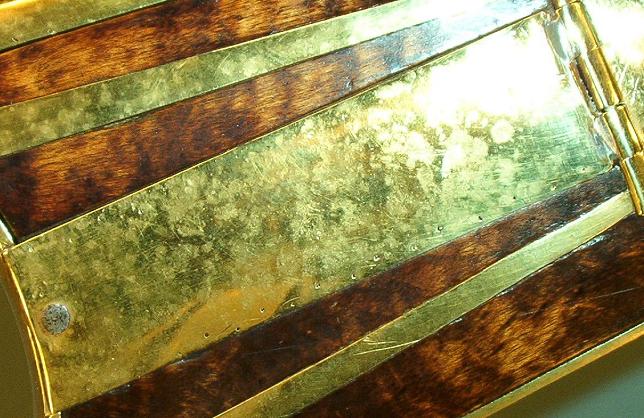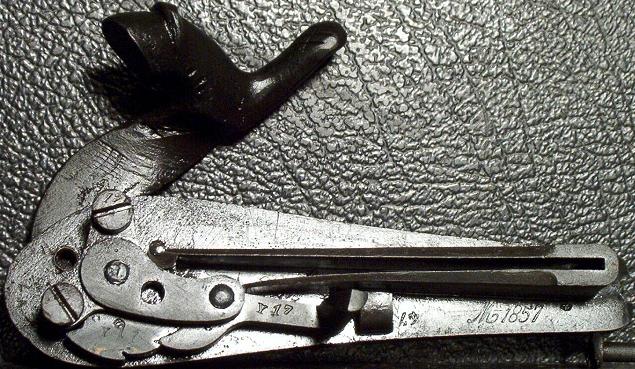These guns make excellent discussion examples because the Flintlock has much green "patina" and there were no markings to be found anywhere on the Pinfire until the existing "patina" was completely destroyed.
The Merriam-Webster's School Dictionary defines "patina" as follows:1. A usually green film formed on copper and bronze by long exposure or by chemicals and often valued aesthetically.
2. A surface appearance (as a coloring or mellowing) of something grown beautiful especially with age or use. [Latin, "shallow dish pan"]The Merriam-Webster Dictionary defines "patina" as follows:
A green film formed on copper and bronze by long exposure to moist air.The Oxford American Dictionary defines "patina" as follows:
1. An attractive green incrustation on the surface of old bronze.
2. A gloss on the surface of woodwork, produced by age.The Random House Dictionary defines "patina" as follows:
1. A green film produced by oxidation on the surface of old bronze.
2. Any ornamental aura.Webster-Dictionary.net defines "patina" as follows:
(Fine Arts) The color or incrustation which age gives to works of art; especially, the green rust which covers ancient bronzes, coins, and medals.WorldReference.com defines "patina" as follows:A fine coating of oxide on the surface of a metal.
Flintlock Kentucky Rifle
The photos below show the Flintlock Kentucky Rifle. Note the green patina on the brass and nickel silver inlays. Also notice the mold that had been growing on the stock (and inside the patch box).


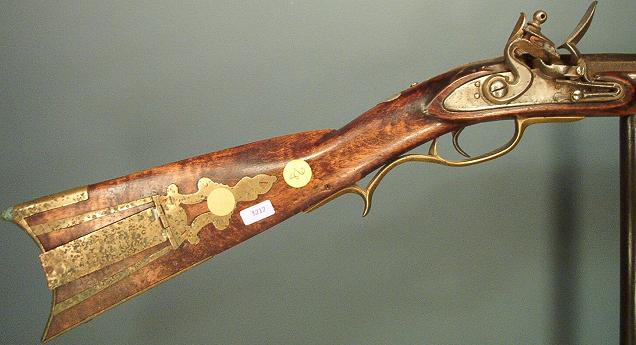
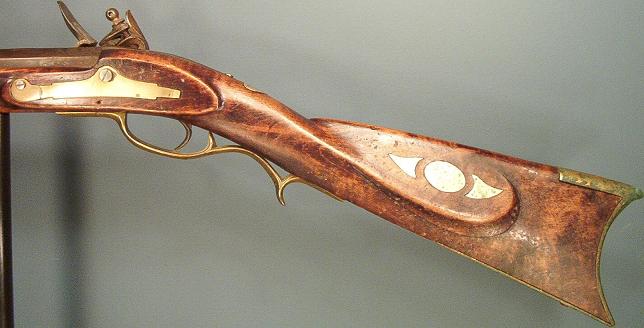
It is worthwhile to mention, using quotes from the above dictionary definitions, that this "fine coating" of "attractive green incrustation" that is "often valued aesthetically" and "grown beautiful" giving an "ornamental aura" was most probably due to dogs (Doberman Pincers) urinating on the firearm several years ago.
The photos below show the Flintlock Kentucky Rifle after gently cleaning and preserving. Note the absence of the damaging patina.


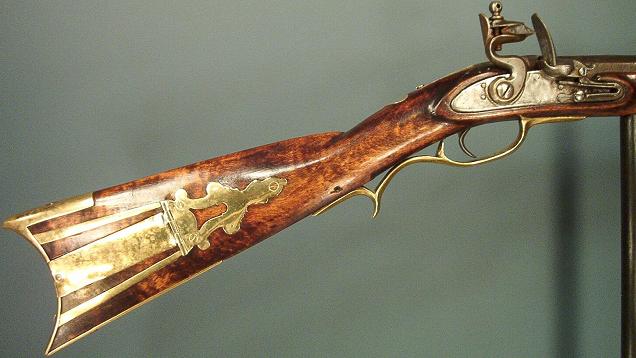
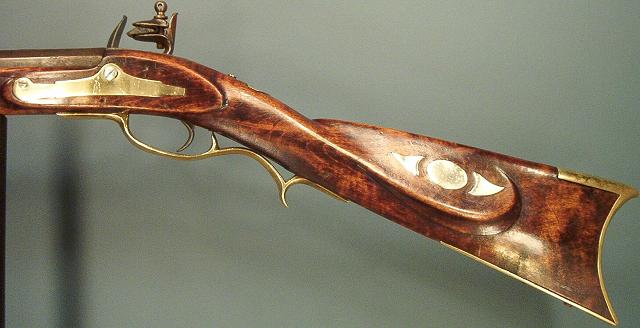
The photo below shows portions of the fine engraving along the edges of the patch box door that had been hidden and was being forever destroyed by the existing "patina":
Pinfire Shotgun
The photos below show the Pinfire Shotgun. On the stock, note the multiple applications of varnish as well as spots of white paint. Notice that it appears that the original stock finish is noticably lighter than the flaked off top coating(s). On the metal parts, note the black finish of some sort on top of heavy crusty rust as well as spots of white paint.


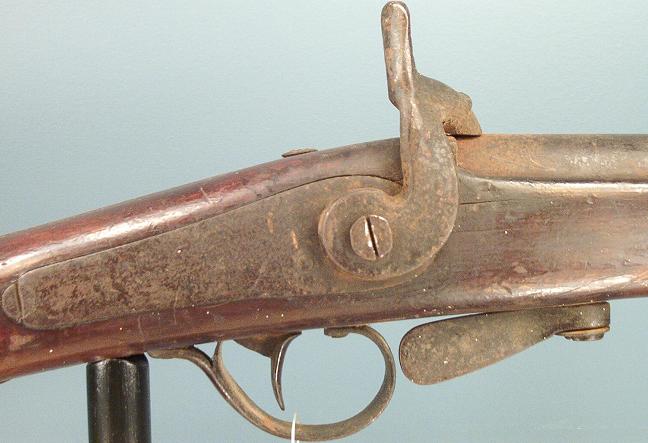
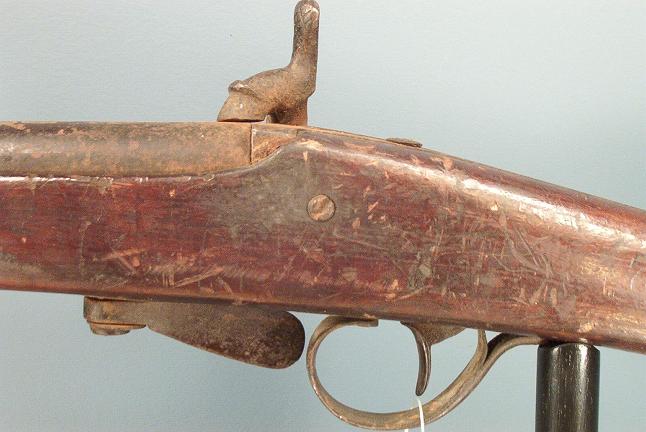
Note that there were no markings to be found anywhere on this gun.
The gun was 100% disassembled and all metal parts were gently and thoroughly sandblasted and then immediately blued. After all the existing "patina" was removed, the gun can now be identified.
The photo below shows the gently sandblasted and blued lock side plate:

Notice in the middle of the side plate the French term "de" that can be seen with what looks like the letter "h" underneath.
The photo below shows the back side of the gently sandblasted and blued lock side plate:
Notice to the right on the back of the side plate the text "M 1857" that can be seen along with several other markings: upside down "47", sideways "H", sideways encircled "S", sideways "Y 1 7" to the left, as well as others. Other individual parts in the lock are also stamped with "Y 1 7" as can be seen in the photo of the assembled lock below:
Notice too the "17" stamped on the top screw.
It appears the marking to the right of the date may be a proof mark as shown in the photo below:
After researching proof marks, this particular proof mark has not yet been identified.
It was discovered that the lock is of a Model 1857 French Percussion Rifled Musket as depicted in the drawings below:
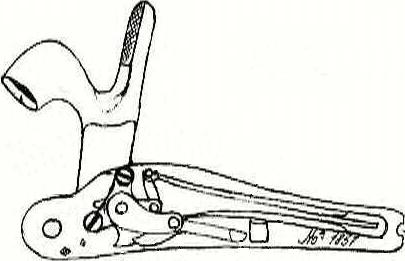
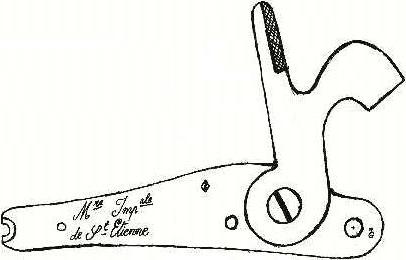
"M-re Imp-ale de S-t Etienne"The photos below show the now identifiable Pinfire Shotgun after cleaning and preserving.


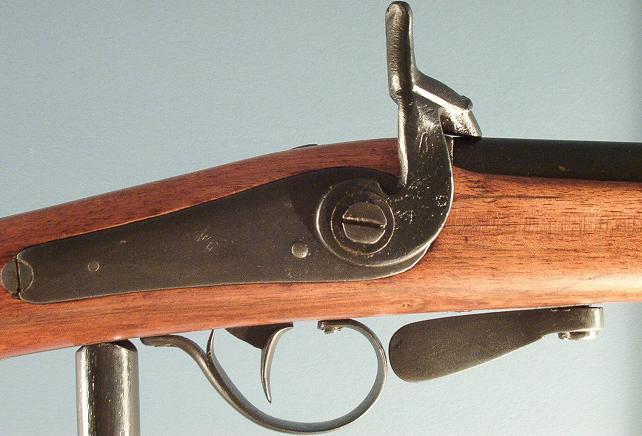
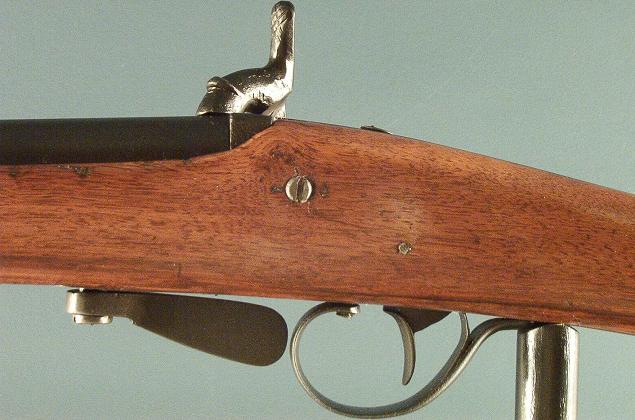
Conclusion
The following terms are used in this conclusion and are defined below as applied to firearms:
Contaminant: Anything unsightly and/or destructive that is not original to the firearm.
Clean: Remove contaminants without harming original finish or material (e.g. remove urine).
Preserve: Prevent contaminants from accumulating (e.g. thin coat of oil to protect from rusting).
Maintain: When necessary, clean and preserve.
Is leaving the existing "patina" on the above firearms simply neglecting to maintain these items and thus could be considered abuse and neglect of a firearm?
It is interesting to compare the differences in attitudes among those in the antique firearm and antique automobile arenas. It would be unheard of to permit existing rust contaminating a vehicle to remain and allowed to forever continue to rot and destroy the metal. Leaving any damage or filth in or on an antique automobile is rarely ever considered an option. It should be emphasized that, as with virtually any item, only repairs and maintenance of the highest quality should be made to an item and anything less would probably best be not performed at all.
Is it not best to remove harmful substances and filth from firearms and then preserve and maintain these items for future generations (and archeologists) as we do for fine automobiles?
Now that the above guns for this demonstration have been gently cleaned and preserved, they will receive the maintenance required to keep them this way for many years to come with no more of the patina that was forever destroying them. These guns now appear as intended by the maker, show the time and effort put into building the gun, and permit all (remaining) markings to be identified.
Links to other views regarding Patina and Cleaning and Preserving:
http://nra.nationalfirearms.museum/collector/conservation.asphttp://www.gunsmithsociety.com/conservation-vs-restoration.htm
http://www.antiqueswords.com/collecting.htm (Swords)
http://hometown.aol.com/machood/swordcare.html (Swords)
http://www.phlf.org/news/faq/NPSPolicyBriefs/briefs/brief06.html (Buildings)
